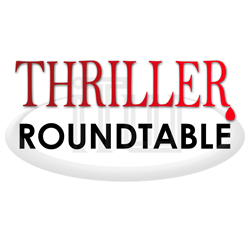

February 14-20: “Readers seem to expect plot twists and surprises told inside a familiar story structure. How do you reconcile this?”
Join ITW members Larry D. Thompson, Sharon Linnea, Glenn Cooper, Kate White, Joe McKinney , Edgar Franzmann, Weyman Jones, John Dobbyn, and Neil Plakcy for another terrific Roundtable discussion!
You won’t want to miss it!
Larry D. Thompson has drawn on decades of experience in the courtroom to craft page-turning legal thrillers. A Texas native, he tried more than 300 lawsuits before scratching the itch to be a novelist. He continues to be a trial lawyer but has just completed his third novel, THE TRIAL, to be published by Thomas Dunne Books and St. Martin’s Press on March 29, 2011.
Sharon Linnéa’s latest books were a trilogy of thrillers, CHASING EDEN, BEYOND EDEN and TREASURE OF EDEN from St. Martin’s Press (new versions out next year!) Her next novel is THESE VIOLENT DELIGHTS, a mystery that will be released in May 2011. Sharon wrote award-winning biographies of Raoul Wallenberg and Hawaii’s Princess Kaiulani before turning to fiction. Visit her at SharonLinnea.com
Physician, biotech executive, screenwriter and film producer, Glenn Cooper’s debut thriller, LIBRARY OF THE DEAD, was published in 2009 with translation in 30 countries. It was a top ten bestseller in the UK, Spain and Italy. The sequel, BOOK OF SOULS was published worldwide in 2010 to similar success. THE TENTH CHAMBER is coming out in 2010/11, followed by THE DEVIL WILL COME. In total he has about 1.5 million copies in print.
Kate White is the veteran editor-in-chief of Cosmopolitan, and also a critically acclaimed author of both fiction and nonfiction books, including9 Secrets of Women Who Get Everything They Want, Lethally Blond, andHush. White currently resides in Manhattan with her husband and two children. Her New York Times bestselling thriller Hush is just out in paperback.
Joe McKinney is the San Antonio-based author of several horror, crime and science fiction novels. His longer works include the four part Dead World series, Quarantined, and the crime novel, Dodging Bullets. In his day job, Joe McKinney is a sergeant with the San Antonio Police Department, but he has also worked as a homicide detective and as a disaster mitigation specialist. Joe currently lives and works in a small town north of San Antonio with his wife and children.
Edgar Franzmann, born in 1948, lives in Cologne/Germany. After thirty years as a newspaper editor he is now editor-in-chief of the official Cologne website. His first novel „Millionenallee“ („Millionaires’ Avenue“) was published in 2009, his second novel „Der Richter-Code“ („The Richter Code“) will follow in April 2011. He writes thrillers set in Cologne, a city of one million inhabitants and a history of 2,000 years. Franzmann is a member of „Syndikat“, the German mystery writers’ organisation.
Weyman Jones‘ writing career began with magazine fiction. He then wrote three books for young readers. HIs historical novel for pre-teens, The Edge of Two Worlds, went to seven printings and earned the Lewis Carroll Shelf and the Western Heritage Awards. It was selected by both the School Library Journal and Book World as one of the best books of the year and was designated a notable book by the American Library Association. It’s now being prepared with a new set of illustrations for republication. A non-fiction book on computers was published in several languages, and his biography is included in Something About the Author, a reference series about prominent authors of juvenile and young adult literature.
John Dobbyn has two legal thrillers published by Oceanview Publishing. His first, NEON DRAGON, deals with the Chinese tong in Boston’s Chinatown. FRAME UP, ranging from Eastern Europe to London and Boston, deals with art theft and forgery as practiced by the Russian mafia. His third novel, BLACK DIAMOND, deals with horse racing and a skirmish between the IRA in Ireland and the Irish mafia in Boston. It is due for publication in Nov. 2011.
Neil Plakcy is the author of Mahu, Mahu Surfer, Mahu Fire and Mahu Vice (August 2009), mystery novels which take place in Hawaii, as well as the collection Mahu Men: Mysterious and Erotic Stories. His M/M romance novels are GayLife.com (MLR Press, 2009), Three Wrong Turns in the Desert (Loose Id, 2009) and Dancing with the Tide (Loose Id, 2010). His mystery novel In Dog We Trust is available for all e-book readers through Amazon.com and Smashwords. He is co-editor of Paws & Reflect: A Special Bond Between Man and Dog (Alyson Books, 2006) and editor of the gay erotica anthologies Hard Hats (Cleis Press, 2008), Surfer Boys (Cleis Press, 2009) and Skater Boys (Cleis Press, 2010). Plakcy is a journalist and book reviewer as well as an assistant professor of English at Broward College’s south campus in Pembroke Pines. He is a member of Sisters in Crime, vice president of the Florida chapter of Mystery Writers of America, and a frequent contributor to gay anthologies.
- LAST GIRL MISSING with K.L. Murphy - July 25, 2024
- CHILD OF DUST with Yigal Zur - July 25, 2024
- THE RAVENWOOD CONSPIRACY with Michael Siverling - July 19, 2024

